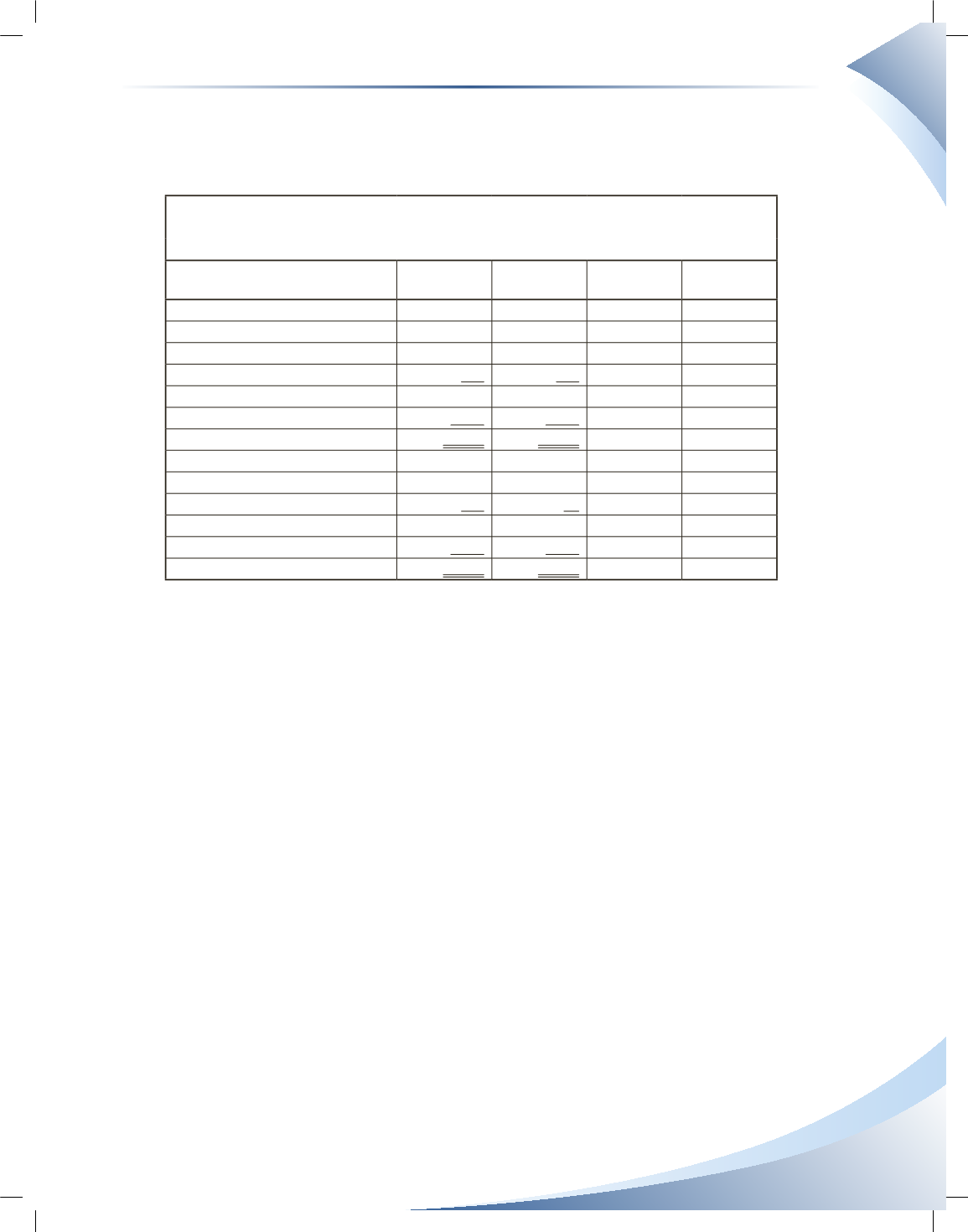
Appendix I
Review Exercise Solutions
431
Chapter 12 Review Exercise—Solutions
Review Exercise 1
Basil's Bakery
Percentage Change and Vertical Analysis
As at December 31
2016
2015
% Change
% of Base-
Figure 2016
Cash
$1,650
$987
67.17% 29.70%
Accounts Receivable
1,175
573
105.06% 21.15%
Inventory
396
256
54.69% 7.13%
Other current assets
301
103
192.23% 5.42%
Total Current Assets
3,522
1,919
83.53% 63.39%
Property, plant & equipment
2,034
1,170
73.85% 36.61%
TOTAL ASSETS
$5,556
$3,089
79.86% 100.00%
Current Liabilities
$1,474
$547
169.47% 26.53%
Non-current liabilities
104
58
79.31% 1.87%
TOTAL LIABILITIES
1,578
605
160.83% 28.40%
SHAREHOLDERS' EQUITY
3,978
2,484
60.14% 71.60%
TOTAL LIABILITIES AND EQUITY
$5,556
$3,089
79.86% 100.00%
Basil’s Bakery has grown considerably in 2016 compared to 2015, as witnessed by the positive
percentage changes in all categories. While shareholders’ equity increased 60.14% from 2015, total
liabilities increased even more at 160.83%. This larger percentage increase in liabilities is not neces-
sarily a bad thing, considering that the total liabilities balance is still much lower than shareholders’
equity balance. As shown in the vertical analysis, total liabilities are only 28.40% of total assets,
compared to shareholders’ equity which is 71.60% of total assets. Additionally, liquidity does not
appear to be a problem, considering that Basil’s Bakery has far more current assets (63.39% of total
assets) than current liabilities (26.53% of total assets). Therefore, the company is in a good position
to take advantage of higher leverage provided it can cover the interest expense that comes with
more debt. Another important thing to note from the annual percentage change is the 105.06%
increase in accounts receivable, which is higher than the percentage increases of cash and inventory.
This means that Basil’s Bakery has been growing its business partly by increasing credit sales. The
company may need to put more focus on management and control of accounts receivable, as the
company’s success will increasingly depend on its ability to collect its accounts receivable.


